In the heart of the world’s most populous nation (1.4 billion people!) lies a tapestry of history woven with threads of time, culture, and civilization. With its rich and ancient past, China boasts a remarkable array of cities that have stood as witnesses to millennia of human existence. From the grand capitals of powerful dynasties to the quiet lanes of ancient towns, each city has left an indelible mark on the pages of history. In this exploration of China’s oldest cities, we embark on a journey through time. Moreover, we will be delving into the stories, legacies, and cultural treasures defining these ten remarkable urban centers. From Xi’an’s Terracotta Army to Hangzhou’s West Lake, join us as we uncover the layers of history, tradition, and modernity that grace the landscapes of these ancient Chinese cities.
1. Xi’an (Chang’an)
Xi’an, formerly known as Chang’an, is often regarded as China‘s oldest city, with a history dating back over 3,000 years. It served as the capital of multiple dynasties, including the Qin and Tang. Xi’an is famous for the awe-inspiring Terracotta Army, a massive collection of clay soldiers and horses created to accompany China’s first emperor, Qin Shi Huang (259-210 BC), in the afterlife. Additionally, the city boasts well-preserved ancient city walls that offer panoramic views of Xi’an. The Giant Wild Goose Pagoda is another iconic attraction, housing ancient Buddhist scriptures. Located in the fertile Wei River valley in central China, Xi’an’s geographic location made it a prominent cultural and trading center along the Silk Road.
Xi’an is a city of contrasts, where history seamlessly blends with modernity. The Muslim Quarter is a bustling area where ancient traditions and flavors collide, offering a sensory feast of local street food and vibrant market scenes. The city’s diverse cultural heritage is further celebrated through the annual Xi’an International Horticultural Expo, which showcases a stunning display of gardens and greenery.

Formerly known as Chang’an, Xi’an is often regarded as China’s oldest city, with a history dating back over 3,000 years.
©gyn9037/Shutterstock.com
2. Luoyang
Luoyang is an ancient city with a history spanning more than 3,000 years. It was a prominent capital during various dynasties, including the Eastern Zhou and Eastern Han. One of its crown jewels is the Longmen Grottoes, a UNESCO World Heritage Site housing thousands of Buddhist statues and carvings. Luoyang is also celebrated as the “City of Peonies” and hosts the annual Peony Festival, showcasing its vibrant flower culture. What’s more, the city’s geographical significance lies in its location in China’s fertile heartland in Henan Province, contributing to its historical importance as a cultural and agricultural hub.
Beyond its historical sites, Luoyang offers a glimpse into China‘s rural traditions through visits to local villages. Exploring the Lijing Gate area provides a deeper understanding of Luoyang’s ancient roots, featuring reconstructed historical buildings and immersive cultural experiences.

One of Luoyang’s crown jewels is the Longmen Grottoes, a UNESCO World Heritage Site housing thousands of Buddhist statues and carvings.
©Bule Sky Studio/Shutterstock.com
3. Anyang
Anyang, nestled in Henan Province, holds a pivotal place in the annals of ancient Chinese history. With roots dating back over 3,000 years, it was once the capital of the Shang Dynasty, one of China’s earliest recorded dynasties. Moreover, Anyang‘s greatest claim to historical fame lies in the Yin Ruins, a remarkable archaeological site that unveiled the oracle bone script, one of the earliest forms of Chinese writing. The city’s tangible connection to China’s ancient past makes it an archaeologist’s dream. Located in the central plains of China, Anyang’s geographical setting in Henan Province plays a significant role in its historical and cultural importance.
In addition to the Yin Ruins, Anyang boasts the spectacular Red Flag Canal. The canal is a testament to human ingenuity and determination in transforming the region’s landscape. Furthermore, it is a marvel of ancient engineering, showcasing a series of locks, tunnels, and aqueducts.
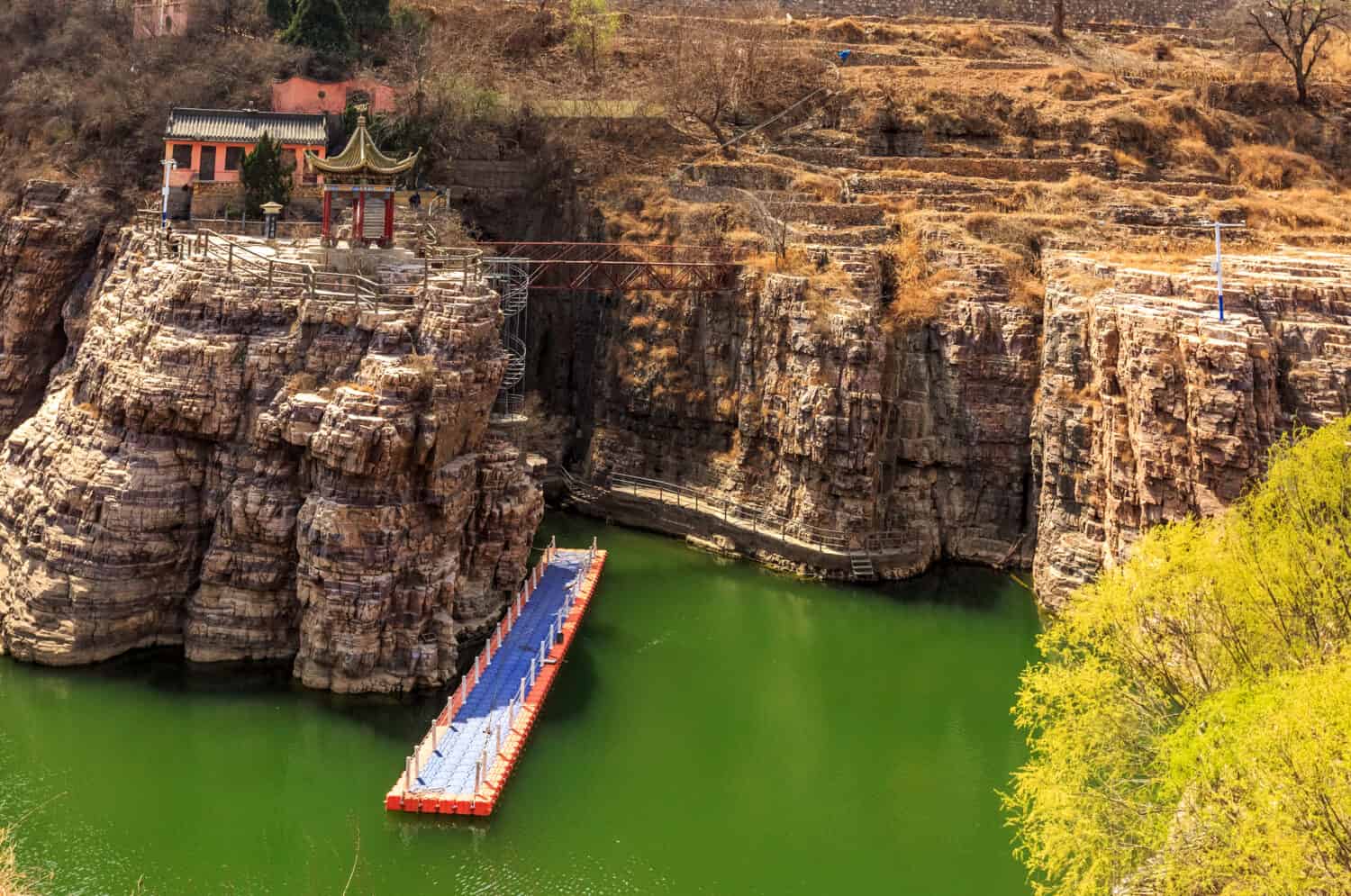
Located in the central plains of China, Anyang’s geographical setting in Henan Province plays a significant role in its historical and cultural importance.
©HelloRF Zcool/Shutterstock.com
4. Zhengzhou
Zhengzhou, the capital of Henan Province, boasts a history dating back thousands of years, with evidence of ancient settlements discovered in the area. Over time, it has become a bustling modern metropolis while preserving traces of its past. Zhengzhou’s strategic position as a transportation hub along the Yellow River has played a key role in its historical significance. Today, visitors can explore the Henan Museum to gain insights into the region’s rich history, from ancient artifacts to more recent cultural contributions. Additionally, the Shang City Ruins Park offers a glimpse into the city’s ancient past, making it a destination where history meets contemporary development.
Zhengzhou’s modernity is intertwined with its historical roots, exemplified by the picturesque Millennium City Park, a serene oasis just outside the city. Here, visitors can appreciate traditional Chinese architecture and serene landscapes, providing a tranquil contrast to the city’s urban bustle.

Over time, Zhengzhou has become a bustling modern metropolis while preserving traces of its past.
©WenPhoto/Shutterstock.com
5. Kaifeng
Kaifeng, positioned along the banks of the Yellow River, holds the distinction of serving as the capital of the Northern Song Dynasty during the 10th and 11th centuries. This era marked a cultural zenith in Chinese history, with Kaifeng at its heart. The city’s most renowned attraction is the Iron Pagoda, a striking ancient Buddhist pagoda celebrated for its architectural elegance. What’s more, Kaifeng is known for its historical significance, particularly during the Northern Song Dynasty. Today, the city provides a compelling glimpse into its storied past, from grand ancient architecture to bustling markets.
Kaifeng’s significance extends beyond its historical sites. The Dragon Pavilion Park, situated on the city’s ancient city wall, offers a serene retreat with traditional Chinese gardens, pavilions, and a picturesque lake. Moreover, the city is a testament to resilience and adaptation. It has successfully harnessed its historical heritage to become a hub for cultural exchanges, hosting various events and festivals celebrating China’s rich history and traditions. Whether strolling through its ancient streets or participating in vibrant local celebrations, visitors can fully immerse themselves in Kaifeng’s captivating blend of history and contemporary vibrancy.
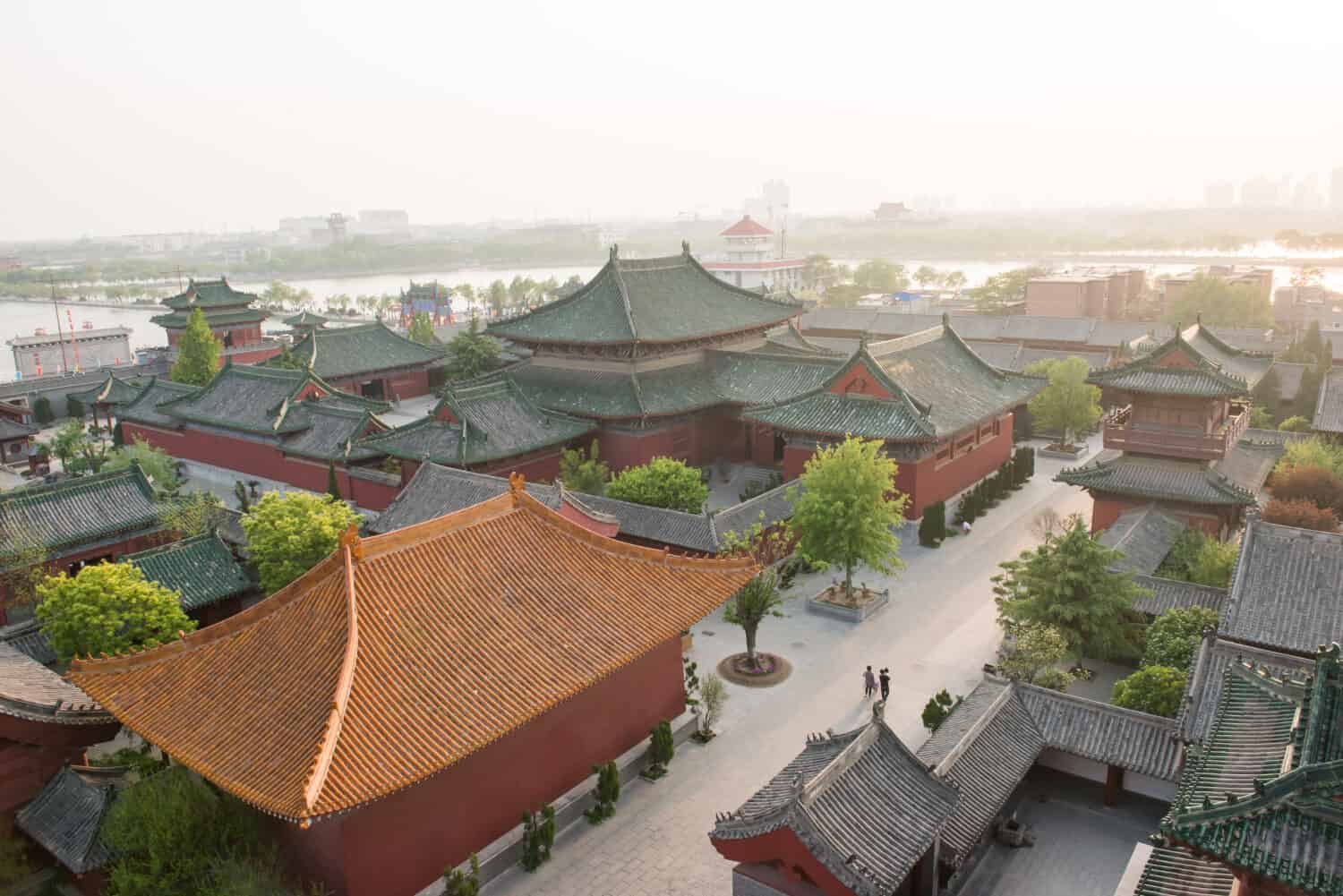
Positioned along the banks of the Yellow River, Kaifeng holds the distinction of serving as the capital of the Northern Song Dynasty during the 10th and 11th centuries.
©Tracy ben/Shutterstock.com
6. Beijing
As the current capital of China, Beijing is an amalgamation of ancient history and modernity. With a history stretching back over 3,000 years, Beijing has served as the capital for various dynasties, including the Yuan, Ming, and Qing. The city is famed for its iconic landmarks, including the Forbidden City, Temple of Heaven, and the Great Wall. These sites are testaments to Beijing’s historical grandeur and are steeped in centuries of culture and tradition. Situated in northern China, the city’s strategic geographical location has made it a central point in Chinese history, influencing its role as a cultural, political, and economic powerhouse.
Beijing is a city where tradition harmoniously coexists with modernity. The city’s ancient hutongs (narrow alleys) offer a glimpse into traditional Beijing life. On the other hand, contemporary art districts like 798 Art Zone showcase Beijing’s modern, vibrant cultural scene. The juxtaposition of the historic and the contemporary makes Beijing a captivating destination.
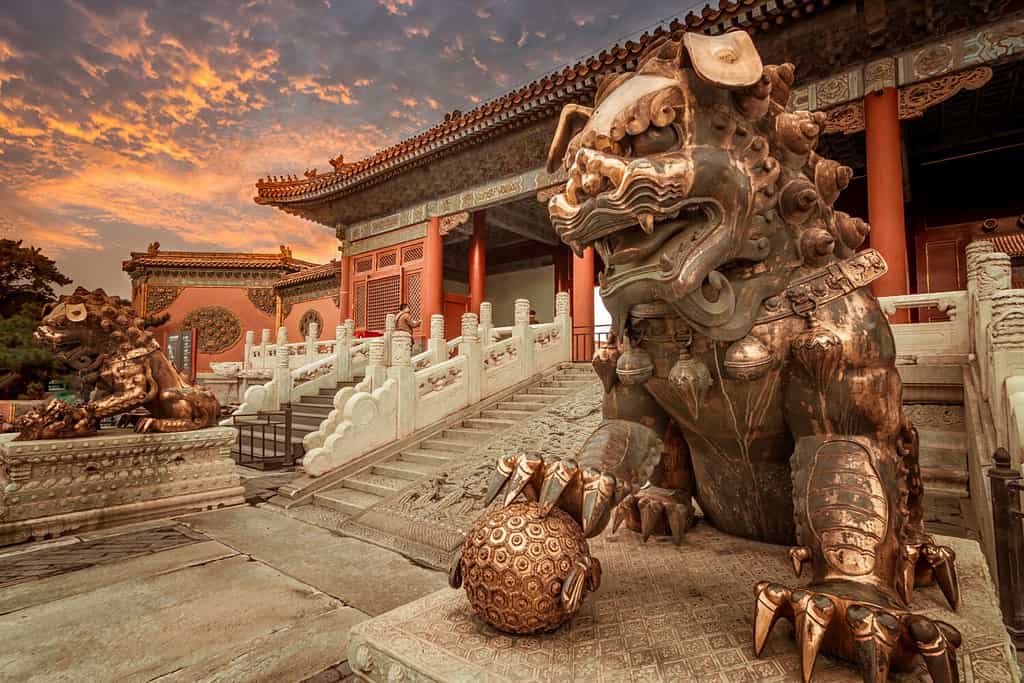
Situated in northern China, Beijing’s strategic geographical location has made it a central point in Chinese history, influencing its role as a cultural, political, and economic powerhouse.
©GuoZhongHua/Shutterstock.com
7. Nanjing
Next up, Nanjing, formerly known as Nanking, has a history that spans millennia. It held the status of the capital during multiple dynasties and played significant roles in Chinese history, including the Taiping Rebellion and the Nanjing Massacre. The city’s historical heritage is on display at sites such as the Ming Xiaoling Mausoleum, a UNESCO World Heritage Site, and the Presidential Palace. Nanjing’s geographical position along the Yangtze River adds to its allure, offering serene landscapes and picturesque riverbanks. It is also renowned for its educational institutions, making it a city that beautifully blends history and modernity.
Beyond its historical sites, Nanjing boasts the ethereal Purple Mountain. This mountain is home to scenic hiking trails, ancient temples, and the Sun Yat-sen Mausoleum. The mountain’s lush greenery provides a serene escape from the urban hustle and bustle.
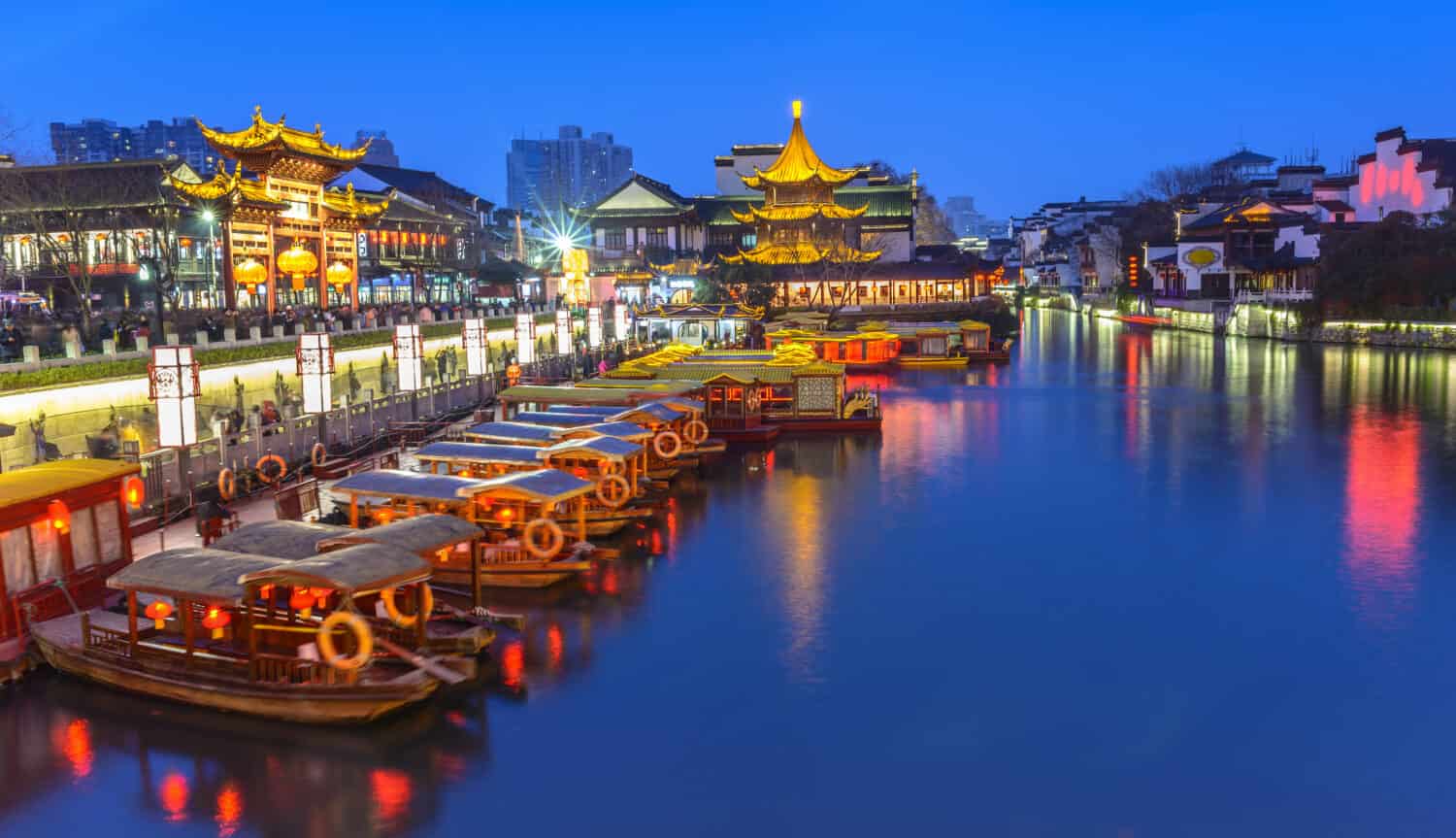
The city held the status of capital during multiple dynasties and played significant roles in Chinese history, including the Taiping Rebellion and the Nanjing Massacre.
©aphotostory/Shutterstock.com
8. Hangzhou
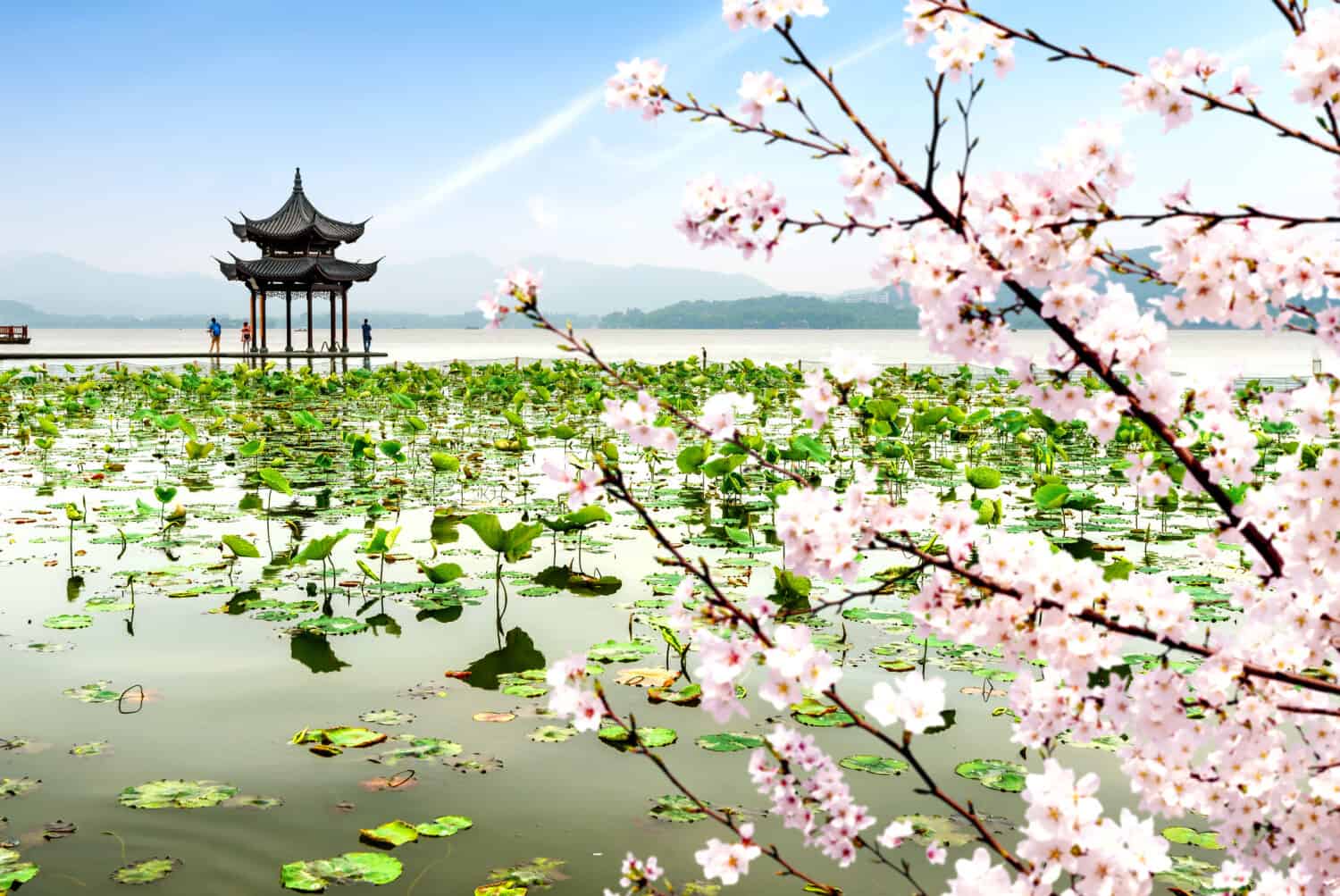
As the capital of the Southern Song Dynasty, Hangzhou flourished as a center for arts, culture, and trade.
©gyn9037/Shutterstock.com
Hangzhou, with over 2,000 years of history, is celebrated for its classical Chinese landscapes and cultural contributions. As the capital of the Southern Song Dynasty, Hangzhou flourished as a center for arts, culture, and trade. The city’s most iconic feature is the picturesque West Lake, an inspiration for poets and artists throughout Chinese history. Hangzhou’s tea culture is world-renowned, with the production of Longjing tea, one of China’s most famous varieties. Visitors can explore historic temples, pagodas, and traditional tea houses that dot the city, experiencing its rich cultural heritage.
Hangzhou’s charm extends to the tranquil Grand Canal. There, boat rides offer a unique perspective of the city’s historical and architectural marvels. All in all, the city’s blend of natural beauty and cultural richness continues to captivate visitors.
9. Suzhou
Suzhou, known for its classical Chinese gardens, has a history extending over 2,500 years. It was a thriving center for trade and culture during ancient times. The city’s UNESCO-listed classical gardens, including the Humble Administrator’s Garden and the Lingering Garden, exemplify intricate design and harmonious landscapes. Suzhou’s silk production is equally renowned, and its traditional water towns offer a glimpse into authentic Chinese life. Nestled along the Yangtze River Delta, Suzhou’s geography has played a significant role in its cultural and economic importance.
Suzhou’s allure extends beyond its gardens to the captivating Suzhou Museum, designed by the renowned architect I. M. Pei. The museum beautifully blends modern architecture with traditional Suzhou elements, providing a cultural experience that mirrors the city’s essence.
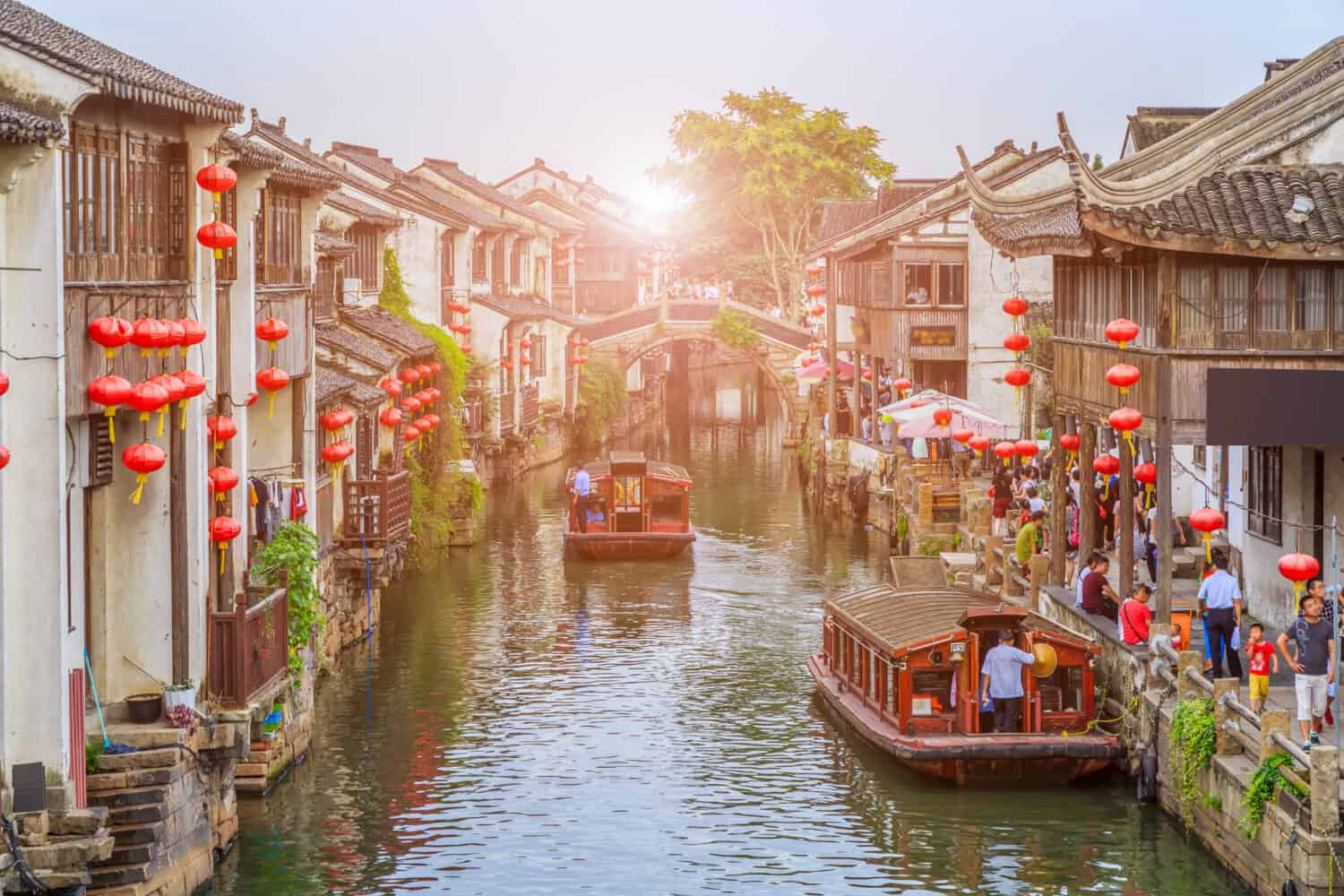
Nestled along the Yangtze River Delta, Suzhou’s geography has played a significant role in its cultural and economic importance.
©4045/Shutterstock.com
10. Ping Yao
Lastly, Ping Yao, dating back over 2,700 years, stands as an exceptionally well-preserved ancient city in China. Surrounded by its original city walls, Ping Yao offers a captivating glimpse into life in ancient China. As a UNESCO World Heritage Site, the city showcases its historical architecture, courtyards, and urban planning. What’s more, notable attractions include the City Wall, Rishengchang Draft Bank, and the captivating atmosphere of its ancient streets. Located in the Shanxi Province, Ping Yao’s geographic position has contributed to its role as a time capsule of China’s past. Ping Yao is indeed an unparalleled destination for history enthusiasts.
In addition to its historical treasures, Ping Yao provides a serene experience through the Shuanglin Temple, a Buddhist temple adorned with exquisite clay sculptures. The temple’s ancient halls and tranquil surroundings offer moments of contemplation amidst the city’s historical tapestry.

As a UNESCO World Heritage Site, Ping Yao showcases its historical architecture, courtyards, and urban planning.
©Lukas Hlavac/Shutterstock.com
Conclusion
All in all, these ten cities encompass a wealth of historical, cultural, and geographical diversity. What’s more, they offer visitors an opportunity to explore China’s rich and multifaceted heritage while witnessing the striking interplay between past and present.
| Rank | City |
| #1 | Xi’an (Chang’an) |
| #2 | Luoyang |
| #3 | Anyang |
| #4 | Zhengzhou |
| #5 | Kaifeng |
| #6 | Beijing |
| #7 | Nanjing |
| #8 | Hangzhou |
| #9 | Suzhou |
| #10 | Pingyao |
Thank you for reading! Have some feedback for us? Contact the AZ Animals editorial team.







